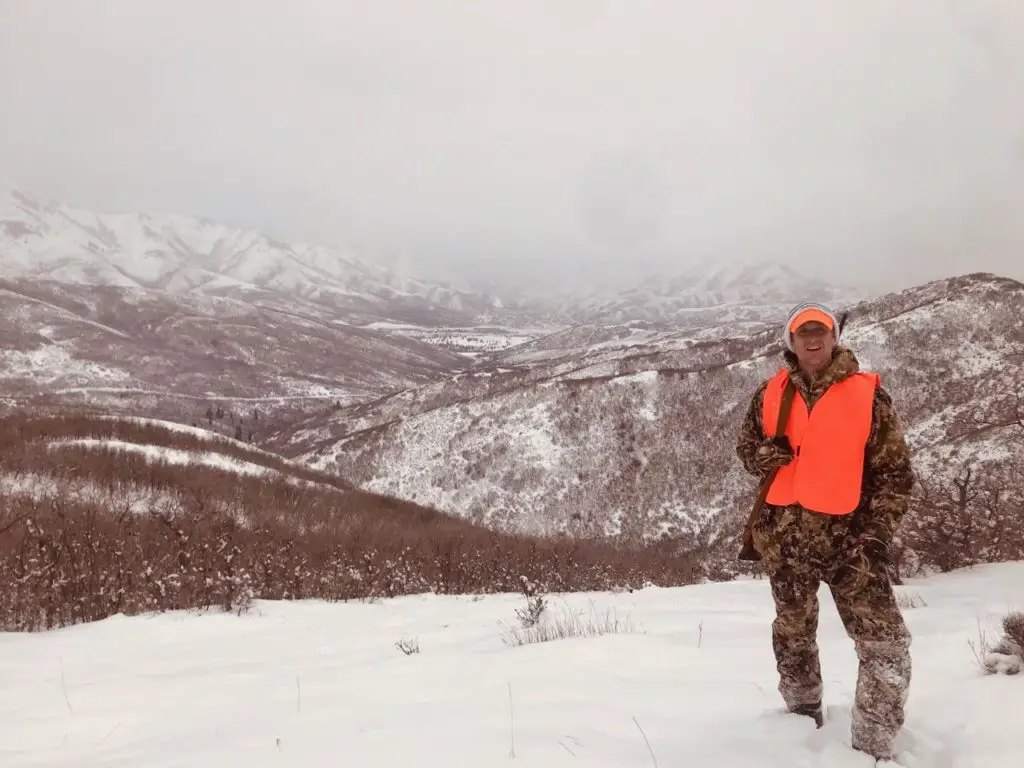
Hunting for elk in Utah during winter is an amazing experience whether you get to fill your elk tag or not.
On this Utah elk trip, we ended up with a whole lot of tag soup, but this was largely a factor of the deck not being stacked in our favor.
I’m not always as excited to write about trips that didn’t result in punching tags or fish. However, any hunting trip where you experience the kinds of backcountry views we had, where you learn a lot that can be applied to the next season, and where you stay safe and warm (mostly), is a great trip.
In Utah winter conditions, you need the right gear and elk hunting strategy to be successful. You also need a few things in your favor that are outside of your control.
In this case, we needed more snow in the higher elevations to drive more elk out of the private ranchland high country and down into lower areas where we could ambush the elk during shooting light.
The day we left after our elk hunt, Utah was getting hit by a massive winter storm, which would have been a perfect setup to hunt elk that day or the following one. However, we needed to get back, after being gone in Utah 5 days already.
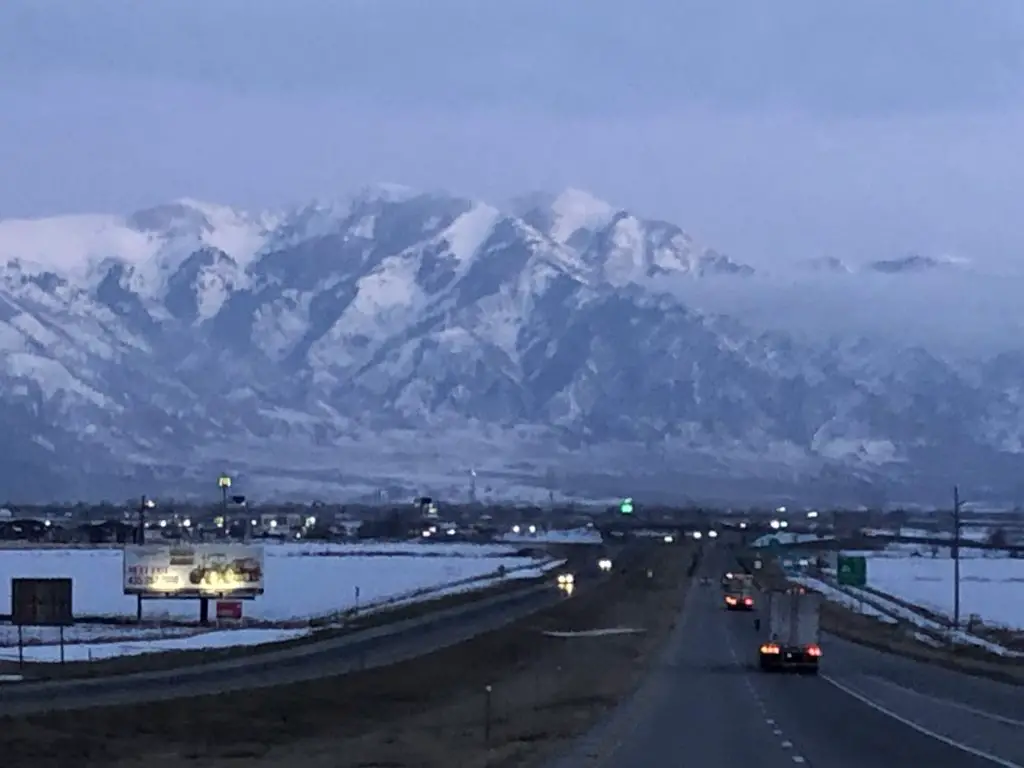
It’s about a 13-hour drive from the Puget Sound area to Salt Lake City, Utah. Surprisingly doable for a < 1-week elk hunting trip.
We hunted for elk for 4 solid days and put some serious miles and elevation gain on our boots. We encountered plenty of other elk hunters who were only willing to walk a mile or two. Or who just wanted to take the first ridge, but not the second, third, or beyond. We were willing to go as far in as we could to find these elk.
Having the right gear to stay warm, but not too warm in 0-degree weather was a factor in ensuring we could go as far as we could each day.
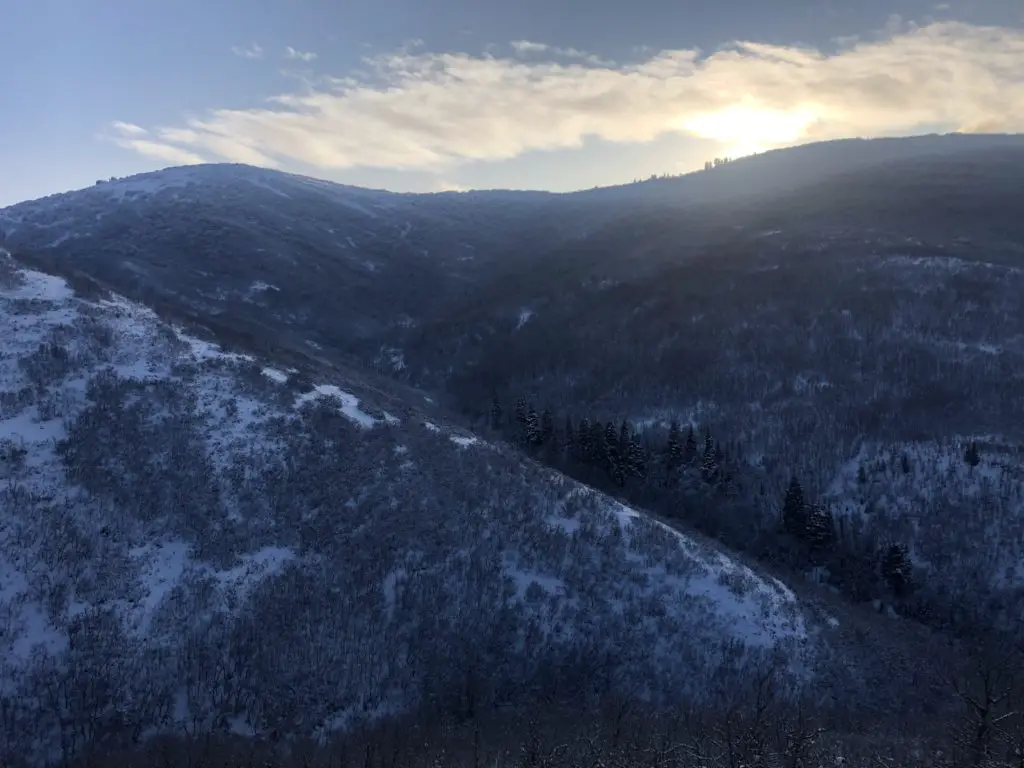
The coldest temperatures we encountered were either right at sunrise or on the last day when the pressure was dropping in anticipation of the winter storm and the wind started really blowing up on the ridge.
Of course, it’s always colder when you are sitting still versus making an ascent up a ridge to get into position for a shot on an elk. So let’s talk about cold weather gear to make a Utah elk hunt a mostly pleasant experience.
Elk Hunting Winter Gear
Below are product descriptions and helpful links to purchase from Amazon a winter elk hunt. As an Amazon Associate, we earn from qualifying purchases you make via the below links. Using the links below costs you nothing additional, but allows us to keep putting out quality content that hopefully helps you to enjoy the outdoors in the Pacific Northwest (and Utah!).
You can spend less on pants, but these performed awesome on our Utah elk hunt as an outer most lower layer. The Sitka Gear Thunderhead Pants kept me warm, dry and they are some of the most silent and performant pants you will find.
One of the critical factors in elk hunting, is to get to a good ambush point while it’s still dark and the elk haven’t left the area before you get into position.
One of the reasons they may decide to leave too early? Human pressure, noise, etc. If your snow pants are zip zopping down the trail as you hike in, how’s that going to work?
Also, on the last day hunting in Utah, we ended up going up to some publicly accessible higher country since the elk were not cooperating by coming down to us. That day required a hike through gnarly oak scrub brush, which involved belly crawling, down on all fours maneuvering, through 1-3 ft of snow at times.
You want gear that allows you to move and tackle any terrain. For 0-15 degrees temperatures, I found that a cold weather base layer, a middle layer, and the aforementioned Sitka Gear pants, kept me warm, but not too warm, and allowed me to perform athletically on the hike each day pursuing elk.
On top, I matched the pants with the Sitka Gear jacket. For the same reasons mentioned above, the jacket was a perfect compliment as a top outermost layer.
Again, I went with 3 layers total here, starting with a cold weather base layer, a heavier moisture-wicking athletic shirt, and this jacket.
I also had another layer in my pack that I could throw on if needed when sitting still and waiting for the elk to show. Keep in mind, that the Sitka Gear sizes are generally on the smaller side or for more of a perfect vs loose fit. This was ok for me with the pants, but I went a little bigger with the jacket to facilitate more layering up top.
I wore a cold weather base layer to facilitate high activity in the extreme cold weather you can get in Utah. These worked out great for me. I’ve had base layers before where the elastic on the waist fit too tightly, which gets uncomfortable after a while.
Lastly, let’s talk about an appropriate pack. I’ve just started to pursue hunting along with all of the fishing and other outdoor activities I do. I didn’t want to spend big money on a pack frame system just quite yet, but I wanted something high quality and comfortable packing in (and out) some heavy loads (elk quarters!).
After significant research I settled on the Badlands 2200. This pack gets the job done for what I needed on this Utah elk trip and beyond.
It also has a lifetime transferable no questions asked warranty! There is a lot of carrying capacity, heavy hip straps to get the load off of your shoulders, a rifle boot, and a hydration system.
Warning for anyone using a camel pack set up in Utah in the winter while elk hunting…Don’t! The line between your water pouch and you will freeze up quite fast.
Better to bring a water bottle of some sort. Even then, the ice floaties get started if you are out there chasing elk long enough. There’s also a meat shelf setup that I didn’t get to test…mutters something about tag soup…
Checkout the above video for a complete breakdown of the Badlands 2200 pack.
Elk Hunting Strategy
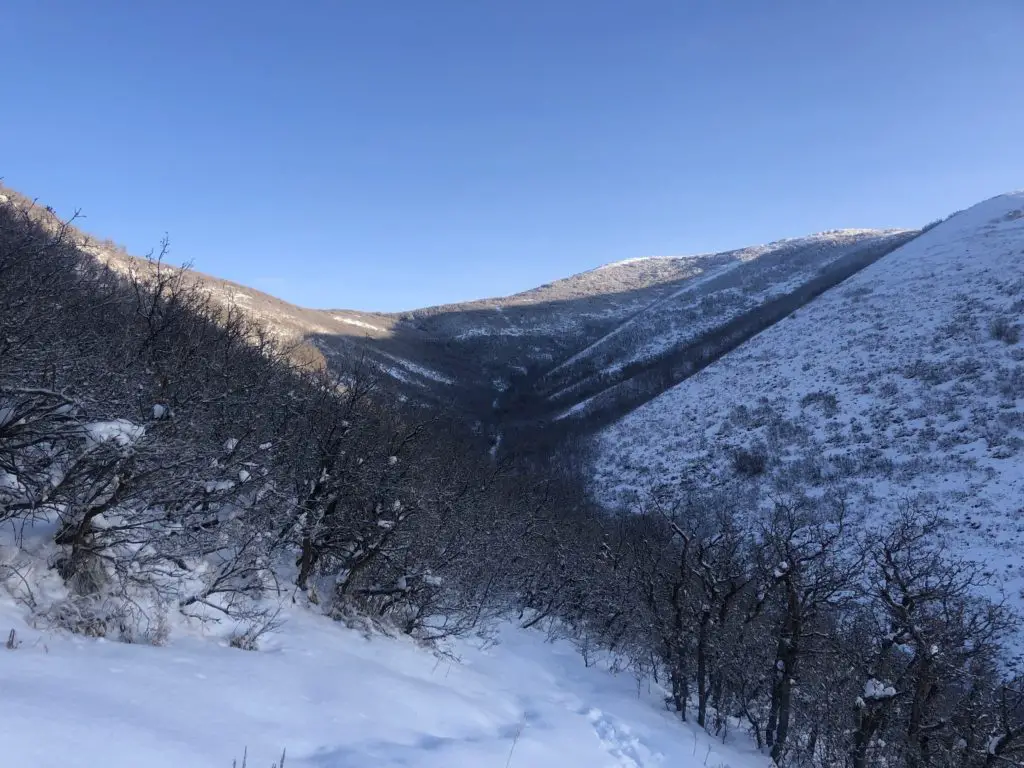
Elk hunting strategy can probably be divided into two categories: Pressured and non-pressured strategies.
My friend from Utah, who was out with me, didn’t have a tag, but loves this sport so much he basically acted as my personal elk hunting guide for 4 days.
Want to learn about hunting quickly? Go with someone who is an expert and they will take years off of your learning curve.
Hunting is one of those activities that is so hard to break into for a newcomer. One of the purposes of this blog is to share in a structured/logical way the information you need to pursue activities you would otherwise need a guide, relative, or friend to teach you.
Those are still faster ways, but let’s face it, many of you searching the internet for this information, don’t have the money for a guide and don’t have a close relative or friend to take you. OK, back to the elk hunting strategy.
Elk often move with cover, cover in the mountains grows where the water flows. We are talking ravines and draws here.
They are easy to find because there will be a whole bunch of barren snow and then these cuts/ravines in the mountain landscape with lots of trees and stuff growing in them. The Utah mountains we were hunting in had several ravines within each mile.
Often there is a main ravine and several side ravines, separated by ridges. During nighttime, elk will move down, protected by cover, into lower elevations where they can more easily dig up their food to graze on.
Depending on how much snow their high country haunts have, will determine whether the elk stay down in those lower elevations or return, often before shooting light.
In highly pressured elk hunting situations, you want to get to a ridge early early early, before shooting light that is as far in as you can reasonably hike based on time, difficulty, public lands, etc.
As other elk hunters arrive, and start hiking up the lower elevation ridges, they will push the elk towards your ambush position. This assumes of course the elk haven’t already vacated the area due to…lack of snow in the higher elevations. If you cannot get to these elk in this scenario, you need an alternate plan.
In our case, we made multiple attempts to stake out a good ambush location way back on these ridges, but in each case, the elk, of which there were many signs everywhere, had already returned before shooting light.
So, on our 4th day in Utah, we decided to go find elk in some higher elevation areas that didn’t depend on the elk staying lower. This meant hiking in much deeper snow, but not deep enough to enable snow shoes because of the thick oak scrub brush in the ravine we were hiking through. As we climbed a ridge out of the ravine far enough back into the high country, we encountered a herd of five magnificent bull elk.
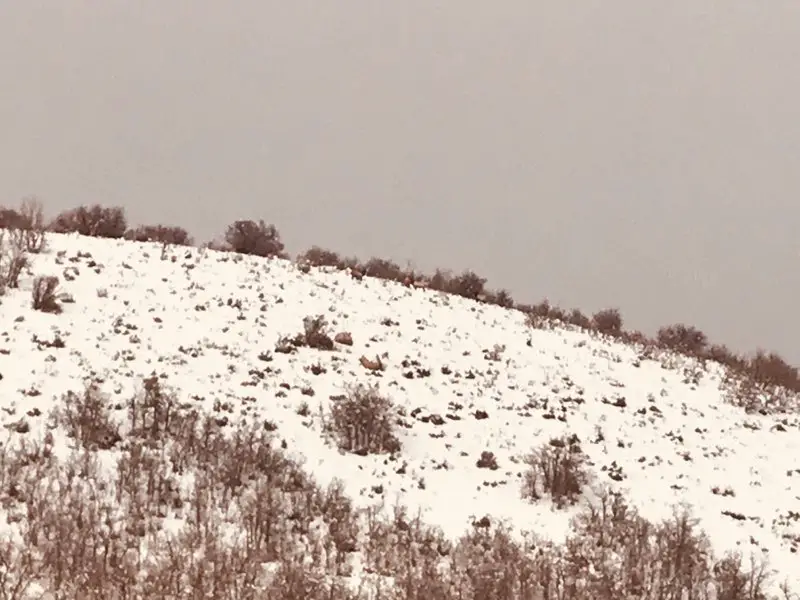
Sadly, we had a cow tag and couldn’t take these elk. We glassed the entire area looking for cow elk and watched these bulls bed down and hang out until dusk. We also saw multiple moose on the higher ridges. No cow elk though.

The views from being way back in the Wasatch Mountains of Utah were a significant consolation prize to not getting an elk. I left this final day of Utah elk hunting, hungry for more elk hunting back home.
I’m already making plans for my 2020 season and how I can spend more time in the mountains and in the forest, scouting, training, and preparing to tackle these animals again. And maybe for another Utah elk trip.

Probably my favorite picture of this Utah trip, as this grove of aspens cleared for exactly one minute before becoming cloud-obscured again. Elk hunting and just being back in the mountains is good for the body, mind, and soul. Happy New Year and happy hunting!
1 thought on “2019 Utah Elk Hunting”
Comments are closed.